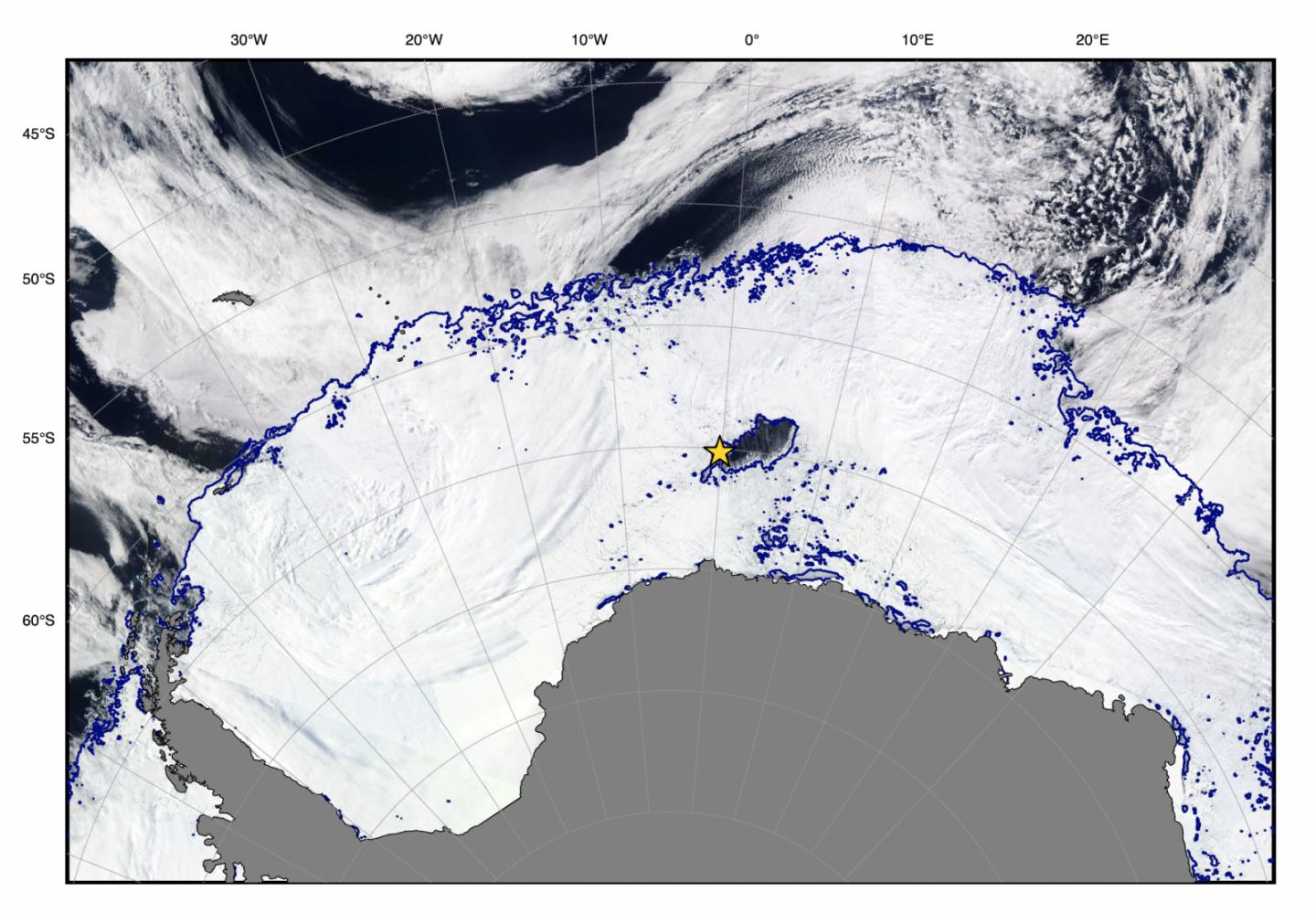
Credit: SCAR ATLAS
Fast facts:
- Polynya is a geographical term that is used to describe an area of unfrozen water surrounded by a large body of ice.
- Researchers at NYU Abu Dhabi have discovered how the Maud-Rise Polynya that was initially spotted in Antarctica in 1974, reappeared in September 2017 at the same location.
- Researchers have found that when intense cyclones occur over the ice pack, mid-sea Polynyas are created as the cyclonic winds push the ice in opposite directions from the cyclone center.
Abu Dhabi, April 24, 2019: A study led by NYU Abu Dhabi (NYUAD) Research Scientist Diana Francis has unraveled the four decade long mystery surrounding the occurrence of a mid-sea Polynya – a body of unfrozen ocean that appeared within a thick body of ice during Antarctica’s winter almost two years ago.
The Maud-Rise Polynya was spotted in mid September 2017 in the center of an ice pack in Antarctica’s Lazarev Sea, causing researchers to question how this phenomenon occurred during Antarctica’s coldest, winter months when ice is at its thickest. Due to its difficult access location, NYUAD scientists used a combination of satellite observations and reanalysis data to discover that cyclones (as intense as category 11 in the Beaufort Scale) and the strong winds that they carry over the ice pack cause ice to shift in opposite directions, which leads to the opening of the Polynya.
At the time of the discovery, the Maud-Rise Polynya was approximately 9,500 square kilometers large (equivalent to the landmass of the state of Connecticut), and grew by over 740 percent to 800,000 square kilometers within a month. Eventually, the Polynya merged with the open ocean once the ice started to retreat at the beginning of the austral summer months. Prior to 2017, this phenomenon has only been known to have occurred in the 1970s when satellite observations started to become more commonly used, and has baffled scientists ever since.
“Once opened, the Polynya works like a window through the sea-ice, transferring huge amounts of energy during winter between the ocean and the atmosphere.” said Francis. “Because of their large size, mid-sea Polynyas are capable of impacting the climate regionally and globally as they modify the oceanic circulation. It is important for us to identify the triggers for their occurrence to improve their representation in the models and their effects on climate.
“Given the link between Polynya and cyclones we demonstrated in this study, it is speculated that Polynya events may become more frequent under warmer climate because these areas will be more exposed to more intense cyclones. Previous studies have shown that under warmer climate, polar cyclone activity will intensify and extratropical cyclones track will move toward Antarctica which could decrease the sea-ice extent and make Polynya areas, closer to the cyclones formation zone,” she added.
###
About NYU Abu Dhabi
NYU Abu Dhabi is the first comprehensive liberal arts and science campus in the Middle East to be operated abroad by a major American research university. NYU Abu Dhabi has integrated a highly-selective liberal arts, engineering and science curriculum with a world center for advanced research and scholarship enabling its students to succeed in an increasingly interdependent world and advance cooperation and progress on humanity’s shared challenges. NYU Abu Dhabi’s high-achieving students have come from 120 nations and speak over 120 languages. Together, NYU’s campuses in New York, Abu Dhabi, and Shanghai form the backbone of a unique global university, giving faculty and students opportunities to experience varied learning environments and immersion in other cultures at one or more of the numerous study-abroad sites NYU maintains on six continents.
Media Contact
Emily Gest
[email protected]
Related Journal Article
http://dx.




